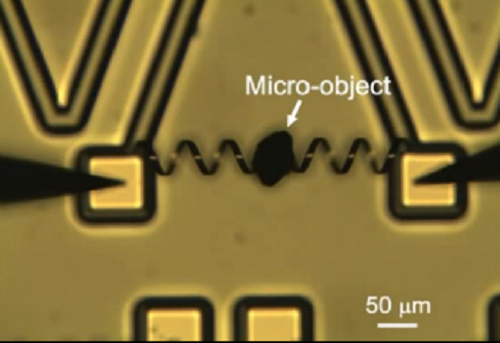
A new robotic muscle has been invented that exerts tremendous strength, exceeding that of any human’s muscle. This muscle has been proven to be 1,000 times stronger and more effective than that of any human.
Project leader and physicist Junqiao Wu from the U.S. Department of Energy’s Lawrence Berkeley National Laboratory used vanadium dioxide to construct the robotic muscle. Vanadium dioxide is malleable, for it has the wondrous ability to change shape, size, and physical properties.
This compound was the best choice, since it changes from an insulator to a conductive metal at 67°C. When the material makes its transformation, it gains incredible strength that can move objects 50 times heavier than robotic muscles. They can also move objects across great distances within 60 milliseconds. How astounding! 
Junqiao Wu stated that “multiple micro-muscles can be assembled into a micro-robotic system that simulates an active neuromuscular system. This simulates living bodies where neurons sense and deliver stimuli to the muscles and the muscles provide motion.” Hence this method of creating robotic muscles is ideal.
The micro-muscles showed reversible torsional motion over one million cycles. These synthesized muscles were able to withstand repeated contractions during a series of lab tests, even when the speed of the movements reached 200,000 RPM. The energy power density of up to 39 kilowatts/kilogram. “These metrics are all orders of magnitudes higher than existing torsional motors based on electrostatics, magnetics, carbon nanotubes or piezoelectrics,” Wu says. It is interesting how the vanadium dioxide muscles can be heated with a small heating pad or with an electrical current. By using the electrical current, the selective hearing of the micro-muscles can occur, thus creating a faster heating and cooling process. When the vanadium oxide absorbs light, it is converted into heat. The coil can then be triggered optothermally. Wu said that “with its combination of power and multi-functionality, our micro-muscle shows great potential for applications that require a high level of functionality integration in a small space.”
Innovators and scientists realize that this technology will be crucial to the development of even more powerful robots in the future.
Story via Mashable, Lawrence Berkeley National Laboratory
Advertisement
Learn more about Electronic Products Magazine





